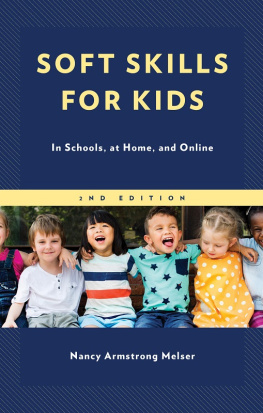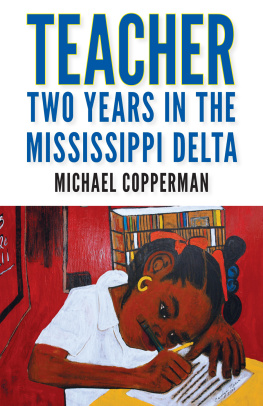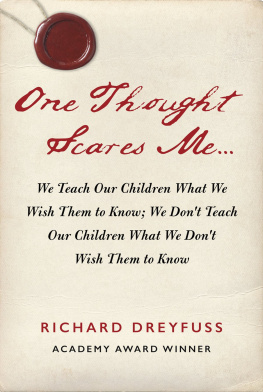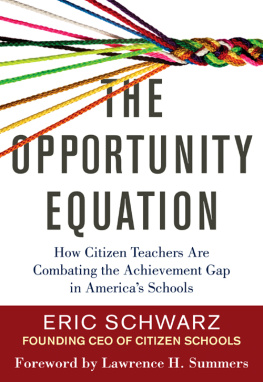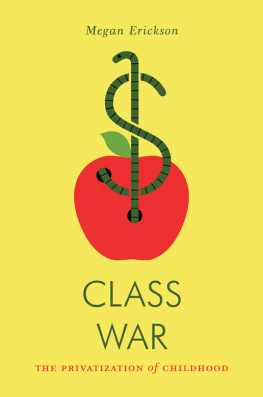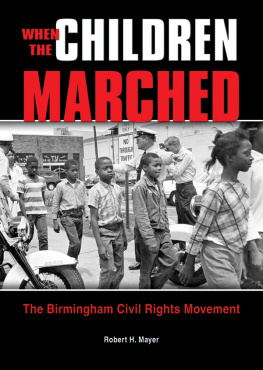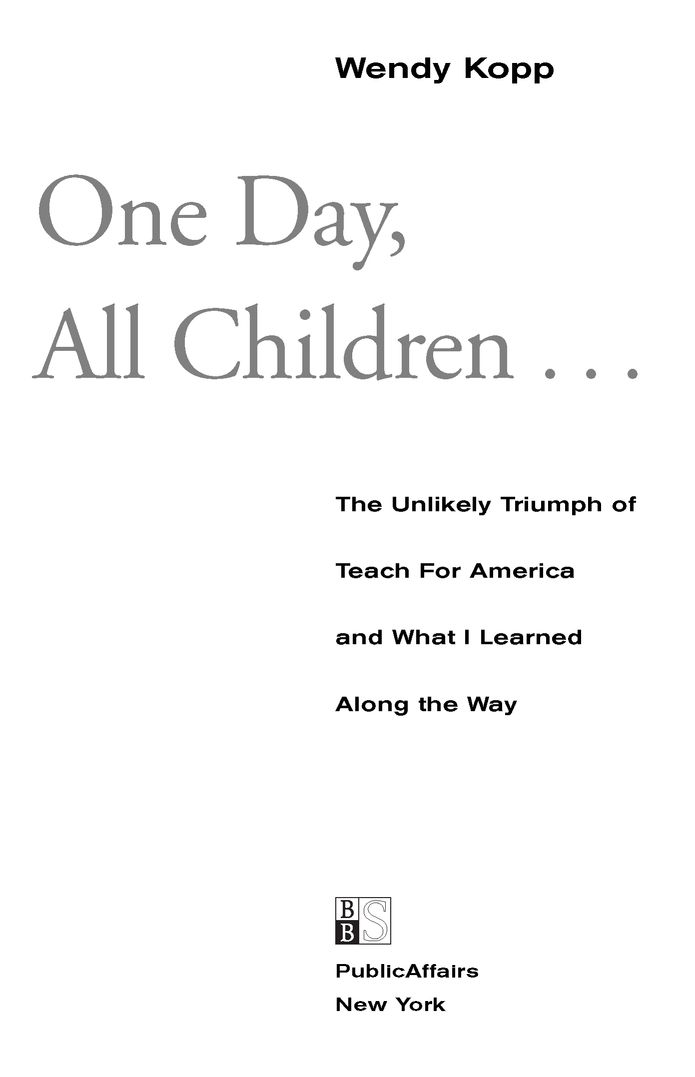Table of Contents
One day, all children in this nation will have the opportunity to attain an excellent education.
Acknowledgments
My deepest regret as this book goes to press is that I have been unable to recognize within its pages all those who have been instrumental in the story it tells. So many people have been a critical part of Teach For Americas growth that it was impossible to include them all. I hope that even those whose names do not appear in print will read this as a tribute to their hard work.
I have many people to thank for making this book possible. First there are those who have been part of Teach For Americaour corps members and alumni, the members of our staff, our advocates in the education community, our board members and funders, our moral supporters. You are the reason Teach For America has survived and thrived. You are the people who taught me the lessons this book recounts. I am grateful for your faith, your wisdom, your patience, your relentlessness.
There are my trusted colleagues who provided invaluable feedback on drafts of this book: Cami Anderson, Iris Chen, Jerry Hauser, Kaya Henderson, Kevin Huffman, Dave Levin, Jessica Levin, Daniel Oscar, Michelle Rhee, Diane Robinson, Abigail Smith, and Neeta Vallab.
There is Kate Darnton, my editor, who has an incredible way with words. Without her intervention, my message would not have been accessible to a broader audience.
There are my parents, who instilled in me the confidence that I could do anything I put my mind to and gave me the opportunity to attain an excellent education.
There is my husband, Richard Barth, who, as you will see, played a significant role in building Teach For America. He has brought me great happiness, and he has put up with my writing this book on our weekends and vacations.
And finally, there are my sons Benjamin and Francis, who now provide new inspiration for the pursuit of our mission.
I feel so lucky to be surrounded by all of you. Thank you for shaping this story and for helping me share it with others.
Preface
As a college senior, I happened upon an idea that would put me in the middle of an incredible movement. The idea was to create a corps of top recent college graduatespeople of all academic majors and career interestswho would commit to teach two years in urban and rural public schools and become lifelong leaders dedicated to the goal of educational opportunity for all. Called Teach For America, this corps would mobilize some of the most passionate, dedicated members of my generation to change the fact that where a child is born in the United States does a great deal to determine his or her chances in life.
Schools in Americas inner cities and poor rural areas have low academic achievement rates. By the time they are only nine years old, children in low-income areas are already three to four grade levels behind their peers in high-income areas in reading ability. And the gap widens from there, to the point that children born in low-income areas are seven times less likely to graduate from college than their more privileged peers.
As a result, children born in poor communities have fewer life prospects and opportunities than children in the rest of the country. This is not fair. Through Teach For America, my generation is insisting upon educational opportunity for all Americans. To us, this is a civil rights issue.
As the following pages will show, my germ of an idea exploded into a movement. It magnetized thousands of peopleincluding college students, experienced educators, and philanthropistswho shared a commitment to eliminate educational inequality. As a result, Teach For America grew quickly. And it swept me along on a steep learning curve.
I started out as one of the most naive college seniors in the history of Princeton University. That Teach For America came to be in spite of my navet is testament to the fact that together idealism and determination can make bold ideas happen.
Of course, it was not easy. Teach For America struggled and nearly died, but thanks to hard work and tough lessons, it has grown into a sustainable, effective organization. The journey has been both illuminating and deeply rewarding.
Along the way, I have met some remarkable teachers and school leaders, people who are fighting with all their mightand succeedingat putting children in low-income communities on a level playing field with other children. These people have shown me that it is possible to realize our vision. And the fact that it is possible gives us the responsibilityand the opportunityto make it happen.
I wrote this book about Teach For Americas first decade because I wanted to share my journey with othersthose committed to eliminating educational inequality, those interested in making their own ideas a reality, and those committed to supporting social entrepreneurs. Please join me in reliving these sometimes difficult, sometimes funny, and certainly instructive ten years.
This book will tell one story of Teach For America. There are thousands of other stories, including those of the individuals who make up our corps, the challenges theyve faced, the impact theyve had on their students and schools, and the impact their experience has had on them. This is my storythe story of one naive college kid with a big idea.
Chapter 1
The Thesis
It was in October of my senior year at Princeton that I realized I needed a plan. What was I going to do after graduation? To this point my life had always been driven toward some academic or extracurricular goal. But now, as I grappled with the biggest decision of my first twenty-one years, I had no idea what I wanted to do. I felt uninspired. I was searching for a place to direct my energy that would give me the kind of significant responsibility that I had enjoyed in various student organizations. I wanted this opportunity right away, not ten or twenty years down the road. More important, I wanted to do something that would make a real difference in the world. I just didnt know what that was.
The issue of my future weighed on me all my waking hours, beginning with my early morning runs. Jogging used to bring me clarity, but now as I ran around the town of Princeton, I felt only more lost. My frustration grew. It became a nagging inner monologue that followed me as I walked across campus between classes or tried to listen to lectures or headed over to Nassau Street, where I would grab lunch and dinner since Id never found my niche among Princetons eating clubs. I was in a funk.
This was 1988, and I was a member of the Me Generation. At least thats what the media said. If you believed the pundits, all my generation cared about was making money and leading luxurious lives.
It did seem that just about every Princeton senior was applying to a two-year corporate training program, most with investment banks and management consulting firms. Yet something seemed wrong to me about that Me Generation label. Most of the people I knew werent heading to these two-year programs because they were dead set on making money. Most werent doing so out of a deep interest in business or high finance either. They just couldnt figure out what else to do. I sensed that I was not alonethat there were thousands of other seniors like me who were searching for jobs that would offer them significance and meaning.


